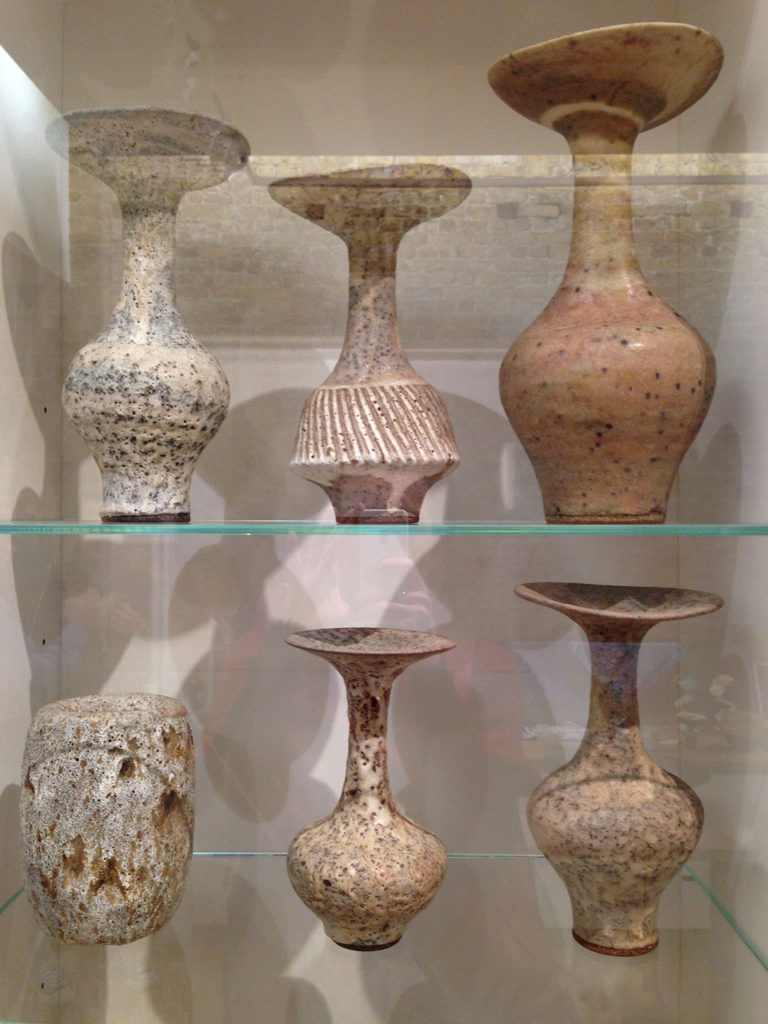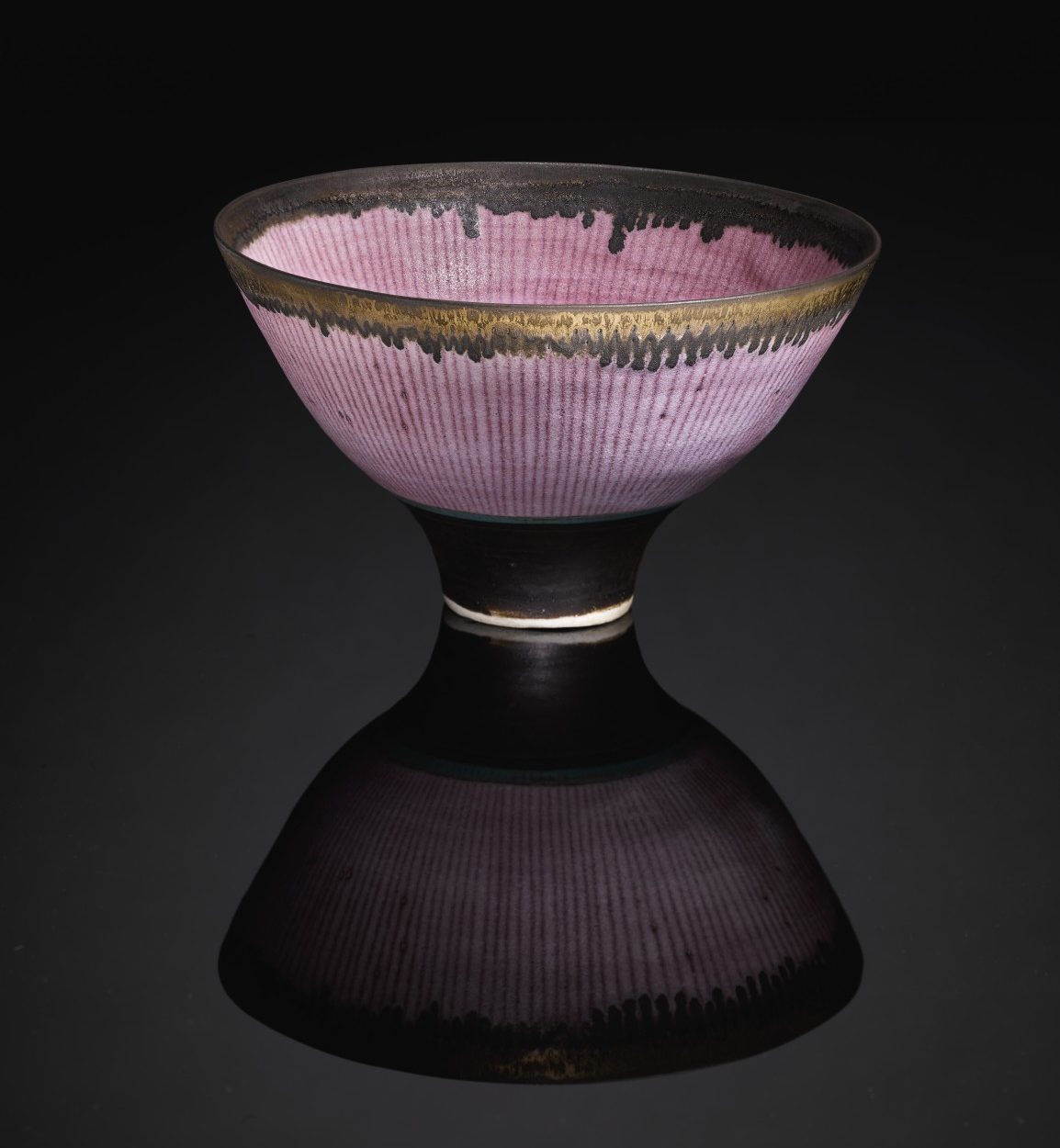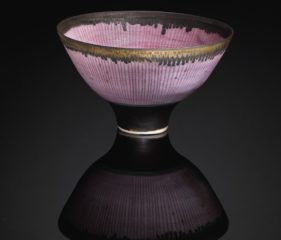Dame Lucie Rie (1905 – 1995) is probably a figure that needs no introduction and remains one of the most important potters of the twentieth century. It is not just her pottery that I admire, I have also been long captivated by her determination and resourcefulness as a human and an artist and how that influenced her style.
She used to carry her unfired work across Vienna on the tram, to the nearest kiln. To limit the danger of damage she’d only want to do this once, so this was the reason why she raw-glazed her pots. It is very interesting how this logistic limitation had a significant importance on her technique and creating a recognisable style.
the making process
Similarly “not quite centering” her pots resulted in beautifully natural unlevel rims that copyists would struggle to achieve. The outside profile is never a simple curve but the moment frozen just before the pot would collapse:
“Centering the clay is the first process a thrower undertakes on the wheel, and Lucie wasted as little time on this as possible. After so many years she knew exactly how much a tall bowl can be allowed to wobble before it faces collapse, and was not much concerned at whether or not a pot was running true in the engineering sense. For this reason many of her pots have unlevel rims, they dip down to one side, or stand slightly at an angle.” (Birks T. “Lucie Rie”)
The image I most associate with Lucie Rie is from an interview with David Attenborough, her tiny figure, reaching into her kiln, with Attenborough holding her by her legs, preventing her from falling inside.

becoming a potter in Britain
She grew up and studied in Vienna, surrounded by the style and elegance of Viennese Modernism. In 1937 she arrived in Britain as an Austrian refugee escaping the rise of Nazism. The ceramic scene in Britain however, was very different. It was dominated by Bernard Leach, who wrote in 1940 that “very few people in this country think of the making of pottery as an art”.
To survive the war, she turned to making ceramic buttons and was in fact referred to by Leach as “the button maker from Vienna”. It wasn’t until much later in her life that she had great success and was showered with honours.
Despite meeting Bernard Leach and other influential friends, Rie struggled to get through with her own ideas in the world dominated by Leach’s historic craft tradition. Her distinctive style stood apart too much. Under Leach’s influence, her work became thicker and clumsy and according to Birks, probably the worst pottery in her career. It knocked her off course. (Birks T. “Lucie Rie” )
Lucie Rie’s style
It was also in her “Bernard Leach period” when she was persuaded to leave the foot of her work as it came off the wheel, as Leach disapproved of spending too much time tidying the base of the pot. But for Rie it was very important that the base of the pot was as well finished as the top. She would often include detailed sgraffito designs inside the foot of her pots. Her deep decorated footrings became her signature mark and for many collectors they are a real pleasure to experience.
She tried to distance herself from her Modernist ideas which she learnt on the continent, but in the end it was those ideas that today make her pots so desirable and timeless. I find that particularly interesting that Lucie Rie’s style developed despite and almost in contrast to dominance of Leach’s robust peasant-ware aesthetics.
Her legacy includes not only duo with Hans Coper but generations of makers after that.
Other inspiring studio potters
Cover photo Sothebys.com

